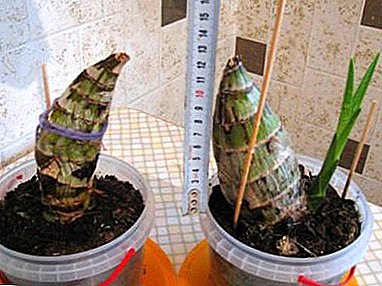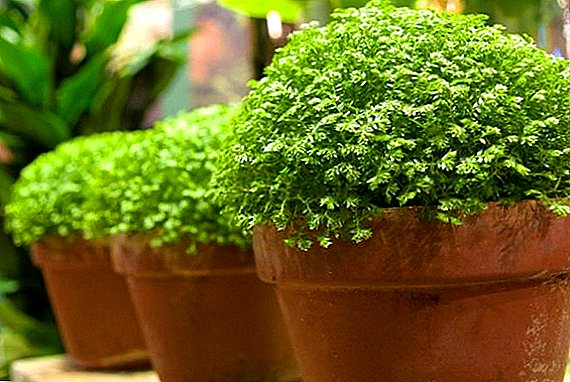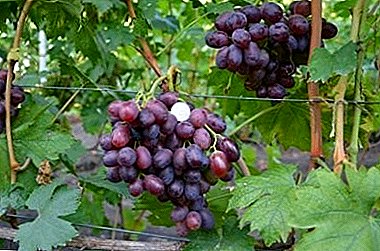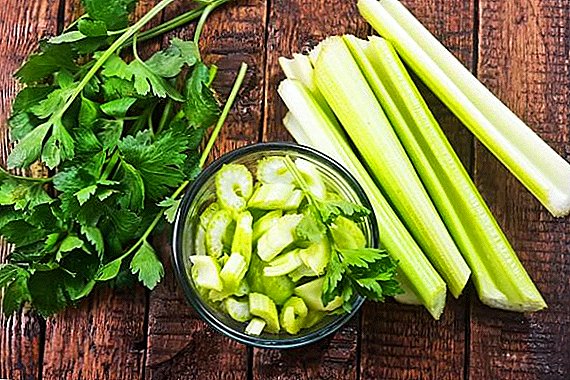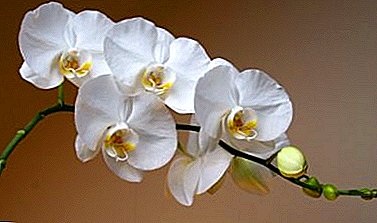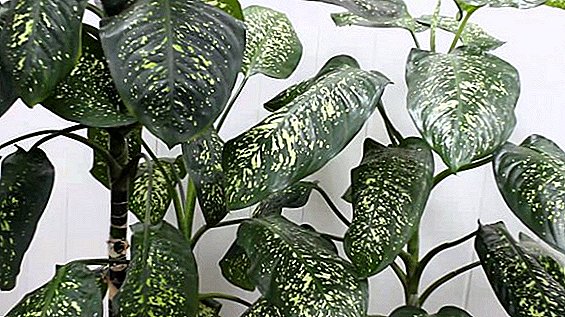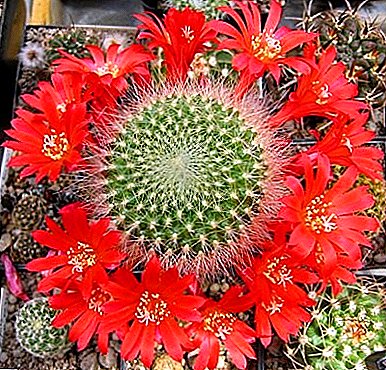
The genus of miniature succulent cacti growing in the highlands of Argentina, Peru and Bolivia is named after Pierre Rebyu, the famous "cactus" expert of the XIX century.
All rebution small (no higher than 10 cm), have a rounded, sometimes more or less pressed from above, shape and, basically, radial spines.
The stem can be ribbed, lumpy or dotted with papillae. Lateral processes often form a whole colony of these babies.
The arrangement of the funnel-shaped bright flowers is very characteristic: the flower stalks grow from the lower part of the stem, unlike similar lobivy or mallillaria, which bloom in the upper parts of the stems.
In this article we will talk about the cactus of the family Rebucii, a description of its varieties and will be presented to his photo.
Types of cactus with photos
Kara-Kara
The rebucium cactus has a rounded, depressed from above, dark, muted-green, ribbed with gray long areoles and yellowish spines of bristles.
The size of a separate cactus rebution does not exceed two and a half centimeters.
Such is the diameter of the catchy red-purple funnel flowers.
Zolotistokolyuchkovaya
Globular, bright green, thickness up to 7 cm. Protected by numerous light yellow sharp spines. The bloom is intense, orange-red.
Saccharocarpitis
Usually it forms a colony of rounded 7-centimeter, grayish-green plants with a lumpy surface, bristled with transparent-whitish spines intertwined with each other.
Funnel cups bright, golden yellow.
Transparent shell
Green, spherical, eight centimeter, tubercular and ribbed. Almost completely covered with vitreous spiny "felt". Funnels bright red.
Vallegran
Bright green rounded flat five centimeter ribbed succulent with whitish pubescent areola-buds.
And also has interlaced thin setae.
In summertime, purple-red two-centimeter cups bloom.
Tiny
The tiny rebus has a flat-spherical shape, up to five centimeters in diameter, light green, with small tubercles arranged spirally.
Sachetinena with small white, yellowish and brown spines. Three-centimeter funnel flowers with piercing red petals.
Fruits are small, also red.
Dwarf
Elongated, cylindrical, not growing above two and a half centimeters. Dotted with white areoles and small spines-bristles of the same color.
Red funnel cups with orange; stamens and pistil - yellow.
Albiflora
Dvuhsantimetrovye succulents with thin, light, thick spines, hairs form branching groups, in the summer, decorated with white, sometimes with a pinkish tinge, funnel flowers.
Purple flowers
Flattened spherical, up to 7 cm thick, of intense dark green color, with brownish long spines. Forms a vast bush colony. Spring-summer bloom, abundant, pink-purple.
Yellow flowers
Green rounded rebution is studded with papillae with sparse, whitish, fine bristles and light areola-like buds.
Plentiful branching, orange-yellow calyx, golden stamen and pistil.
Krainz
Spherical light green four-centimeter plant with especially large areoles and short light spines.
Blood funnel cups, also four centimeter.
Senile
Spherical or slightly elongated green stem does not grow above 8 cm. It is densely covered with short, white, translucent bristle-spines.
The outer petals are red, the central ones are light. There are varieties with pink and yellowish cups.
The whitest
It is the whitish spines-setae that dot the flattened-spherical five-centimeter succulent.
Corollas purple funnels with a diameter of 3 cm.
Sandy
Single five centimeter succulents, protected by short spines, form 15 centimeters clusters. In spring, attractive orange-yellow funnel-cups open. Cactus is cold resistant, tolerates a negative temperature - to minus four.
Narvacensa
Flat-rounded cacti-rebution with a thickness of 4 cm forms a group-colony size up to 12 cm.
Pale pink three centimeter funnel cups open in spring.
This rebution can withstand cooling to minus seven, but unstable to rot.
Steinbach
Five-centimeter stalks with brown spines-bristles branch abundantly. The color of the flowers is very changeable: they emit varieties with yellow, orange, scarlet, lilac funnels. Maintains a drop in temperature to four degrees below zero.
Neokaminga
Single specimens diameter up to 9 cm form groups of 25 cm. Numerous yellowish-orange cups open up 2.5 cm across.
This succulent does not survive at low temperaturesbut resistant to intense sun and intense heat.
Rausch
The dark, gray-green, spherical, slightly tuberous stem is almost devoid of thorns. Tubular funnels with crimson petals open wide, up to a diameter of 4 cm.
Marsoner
Globular light green fine tuber no more than 5 cm wide with reddish brown bristle spines blooming in spring.
Petals are bright, canary-yellow; corolla size about four centimeters.
Transfers not long frost to minus 10 ºС.
Mouse
A low succulent with a stem, completely covered with whitish woven bristles, in the summer it is decorated with orange four-centimeter funnel-shaped corollas.
Bristle
Spherical six centimeter; densely braided by a layer of very light bristles-thorn.
The inside of the funnel cups is golden yellow, the outside is brownish-purple; This species blooms from May to July.
Helios (sunny)
Globular ribbed grayish-green; pulled out with age in height to 8 cm and strongly branched at the base, forming dense, extensive groups.
Short silvery spines of bristles almost completely cover the spiral-ribbed, fine-tuberous surface of the stem.
The petals of four centimeter red-orange funnel flowers that unfold in summer are decorated with a central purple strip.
Flavistila
Globose flattened stem with a diameter of not more than 5 cm, gradually overgrown with few children.
Numerous flowers of intense red-orange color open up to 4 cm in diameter.
Fulvizet
Rounded, slightly elongated stems of very dense dark green color.
Thickness is 5-6 cm and height is 8-10 cm.
Dense accrete branched groups covered with gray areoles and protected with brown spiny-bristles.
It blooms in mid-summer.
Petals are dark red, shiny, 2.5 cm.
Perplex
The stem is greyish-green, rounded, elongated, spiral-ribbed, intensively branched, reaches 8 cm in height. Spines are brownish.
The bloom is summer, abundant, bright pink-purple.
In room culture develops well in partial shade.

Pulvinosa
Abundantly branching squat succulent; a single plant has a thickness of 3 cm and a height of 5 cm. The surface is covered with very light fine spiny hairs. Orange-yellow, three-centimeter flowers
Even in natural conditions, significant species variation is characteristic of rebuses.
These unpretentious, flowering and breeding seeds in room culture cacti as a result of cross-pollination give such hybrids that are already difficult to attribute to a particular species.
Therefore, collectors who are interested in the cultivation of pure forms, acquire seeds with a clearly defined species and propagate the breeds grown from them exclusively by side processes.
Home care
Lighting
The southern windows are best suited, with bright year-round lighting and an indispensable dose of direct sunlight.
Copies with long spines, bristles, completely braiding the stem, easily tolerate long sun-storms, the rest on clear summer days will need shading.
Temperature
 Insofar as "wild" Rebuses grow in the desert highlands, rising to 2500m above sea level.
Insofar as "wild" Rebuses grow in the desert highlands, rising to 2500m above sea level.
They like hot summer days (up to plus 38) and moderately warm nights, and in winter - coolness: from 5 to 10 degrees with a plus sign.
In the summertime, “vacations” are very useful on the open balcony (a pot of cactus can be temporarily stuck in a hanging flower box) or in the garden.
In this case, the daily heat drop will be created naturally. In addition, the "mountaineers" need fresh air and regular airing.
The soil
As a landing substrate take a special ready-made soil, or mix coarse sand with turf and leaf soil in equal quantities.
Good also add granite chips, peat and pieces of charcoal.
Landing
Given that the root system of this kind does not grow deep into, but rather resembles the outlines of a turnip, you need to choose a shallow, but wide container for planting - best of all ceramic, without solid glaze.
The vast area will help evaporation of excess moisture and, moreover, will provide an opportunity to branch and grow a squat colony of stems.
At the bottom of the pot necessarily put a thick - up to a third of the volume - drainage layer: expanded clay, small pebbles or a brick battle with pieces of charcoal.
Then pour the prepared soil and carefully, without injuring the vulnerable roots, put the cactus.
Dump the earthen mixture and gradually condense it. At the same time, the root neck of the succulent is not buried: the body of the cactus must support the upper drainage layer of small pebbles.
Transfer
As a rule, the average transplant is performed every two years; The need for transplantation is determined mainly by the intensity of the growth of the colony of stems.
The best transplant time is the spring start of active growth..
If at this time the buds have formed, the procedure is postponed until the end of flowering.
When transplanting retain the old earthen room.
This, however, does not apply to purchased copies. As a rule, those succulents that go on sale are grown on special solutions, and the substrate in the container is devoid of nutrients.
Therefore, immediately after the purchase, the purchased copy is completely freed from the old soil and transplanted into a fresh soil mixture.
Air humidity
Dry air in itself is quite suitable for rebuyami, but the operation "mountain dew" - spraying a cloud of water spray from a small spray gun - will do them good and eliminate dust accumulation on the stems
Watering
 Spring-summer watering is carried out regularly, after the soil in the pot dries out.
Spring-summer watering is carried out regularly, after the soil in the pot dries out.
The water is taken soft, well settled; can be acidified by dissolving half a teaspoon of citric acid in 7 liters of water.
In the middle of September, on condition of cool content, watering of all plants thicker than a centimeter is practically stopped.
On a cold wintering, the more “dry law” reigns, but at 14-18 degrees winter rebution watering is rare and very limited.
Top dressing
In the season of active growth, fertilizing is carried out with a special fertilizer for flowering succulents.
You can also cook weak solution complex fertilizer low nitrogen, as an excess of nitrogenous compounds leads to root rot.
Bloom
Unpretentious members of the genus bloom annually, brightly and abundantly, if they are healthy and have gone through a cold dry wintering.
Many kinds of easy pollinated and give seeds.
The video below shows the bloom of the Rebution cactus:
Breeding
At home, the use of seed propagation and lateral processes.
Seeds
In March, the seeds are disinfected for 10 minutes in a pale pink solution of potassium permanganate.
They are dried in the air, sown in plates with good drainage and a sterilized mixture of such composition: leaf soil, coarse sand, crushed charcoal in a ratio of 2: 2: 1.
- cover with polyethylene film or glass;
- contain greenhouse at 15-20 degrees, regularly ventilate, the substrate is moistened;
- after germination, the seedlings are planted in small containers and grown, protecting from excess of direct sunlight;
- in the second year life young rebutsii can bloom.
Side shoots
In the process of growth, with active branching, shoots are formed as if independent, but still associated with the main stem.
In the spring season or in the middle of summer, the lateral processes can be carefully separated, and sprinkled with crushed charcoal on the injured areas.
Diseases and pests
The main threat - root rotthat occurs when excessive watering in combination with low temperatures, as well as an excess of nitrogen in the soil.
 Protection for susceptible The root system will serve the basic requirements for the conditions of detention: good drainage, loose soil, strictly controlled in accordance with the season by watering with soft, not cold water, top dressing with low nitrogen, highly diluted mixtures.
Protection for susceptible The root system will serve the basic requirements for the conditions of detention: good drainage, loose soil, strictly controlled in accordance with the season by watering with soft, not cold water, top dressing with low nitrogen, highly diluted mixtures.
Attenuated by improper care copies can settle mealybugshieldovka or red spider mite. The most effective against these insects are systemic insecticides.
Cold, dry winters, clean air, hot summers with cool nights and a bit of moisture are all that the Andes residents need with their wreaths of tubular funnel flowers to feel at home.


